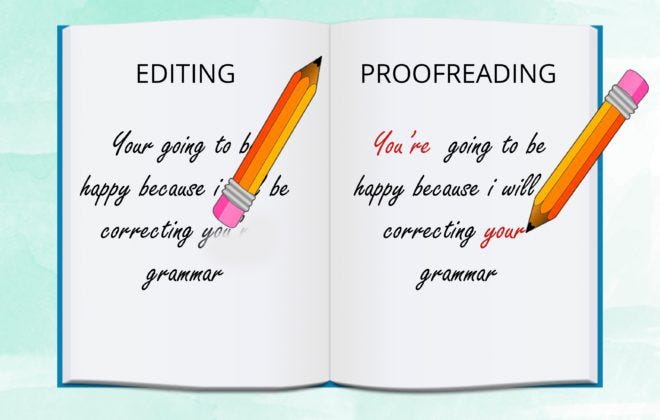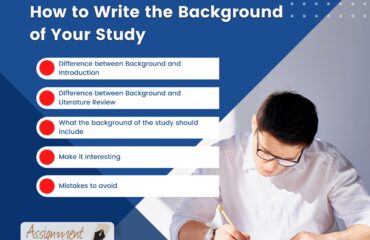
In today’s fast-paced society, effective communication is essential in various aspects of life. Whether you are applying for a volunteer program, corresponding via email, or completing an assignment for school or a report for work, it is crucial to convey your thoughts clearly and concisely. To ensure clarity and accuracy, editing and proofreading are invaluable skills for any writer. This blog aims to explore the significance and concepts of editing and proofreading, particularly for students and teachers of academic English. Additionally, it provides practical tips to enhance your writing skills and achieve academic success.
Table of Contents
The Difference Between Editing and Proofreading
Understanding the distinctions between editing and proofreading is essential for refining your writing skills. While both processes aim to eliminate errors and improve the overall quality of your work, they serve different purposes:
Editing
Editing focuses on the broader aspects of your writing, such as structure, clarity, coherence, and overall flow. During the editing process, you revise your work to improve the organization of ideas, strengthen arguments, and ensure consistency. This stage involves reorganizing paragraphs, rephrasing sentences, and removing unnecessary information.
Proofreading
Proofreading, on the other hand, hones in on the finer details of your writing. It involves meticulous checking of spelling, grammar, punctuation, and formatting errors. Proofreading ensures that your work is free from typos, missing or misused punctuation marks, and other mechanical mistakes.
Both editing and proofreading complement each other and contribute to achieving polished and error-free writing.
Why Editing and Proofreading Matters
Writing flawlessly on the first draft is a rare talent possessed by only a few individuals. For the majority of students and teachers, thorough editing and proofreading are necessary to produce high-quality work. These processes refine your writing, ensuring it is ready for presentation, publication, or submission. Here are seven reasons why editing and proofreading are essential:
1. Writing Perfection is Challenging
Perfecting your writing requires effort and multiple rounds of editing and proofreading. While the creative process allows for the initial expression of ideas, refining your work is necessary to eliminate errors and inconsistencies. Taking the time to revise your writing will result in a high-standard piece of work.
2. Demonstrates Diligence
An error-free and consistent assignment showcases your passion and dedication. Employers and academics appreciate the attention to detail required to produce a document free of typos, grammar mistakes, and formatting issues. Your commitment to producing polished work will impress your readers.
3. Enhances Readability
Contrary to popular belief, complex sentences and words do not guarantee writing success. The key to effective writing lies in delivering ideas clearly, logically, and with cohesion. Writing that is easy to read and understand ensures that your ideas, arguments, and evidence are clarified and convincing.
4. Facilitates Faster Grading
Professors often face a mountain of papers to grade. By carefully editing and proofreading your work, you can help expedite the grading process. The easier it is for your tutor to read your document, the more fluent your writing will be. This efficiency will leave a positive impression on your professor.
5. Improves Grades
Well-edited and proofread writing instill confidence in your tutor, increasing the likelihood of receiving higher grades. Conversely, sloppy layouts, typos, spelling errors, confusing arguments, and incorrect sentence structures can lead to a lower grade. Presenting error-free work demonstrates your competence and command of the subject matter.
6. Avoids Plagiarism
Careful editing and proofreading play a vital role in preventing inadvertent plagiarism. By triple-checking your work for accurate quotation marks, citations, references, and paraphrasing ideas from other sources, you can avoid the serious consequences of academic misconduct.
7. Enables Publication Opportunities
For students pursuing advanced degrees, such as a master’s or PhD, publishing their work is often a goal. However, publishers will not consider accepting writing that contains obvious errors. Therefore, if you aspire to publish your work, thorough editing and proofreading are crucial to maximize your chances of success.
Effective Strategies for Editing and Proofreading
Now that you understand the importance and distinctions between editing and proofreading, let’s explore some strategies to enhance your editing and proofreading skills:
1. Take a Break
After completing a draft, take a break before starting the editing and proofreading process. This break allows you to approach your work with fresh eyes and a clear mind, enabling you to identify errors and inconsistencies more effectively.
2. Read Aloud
Reading your work aloud helps identify awkward sentences, grammatical errors, and inconsistencies. The auditory feedback allows you to assess the flow and coherence of your writing. Additionally, reading aloud helps you catch typos and missing words that may be overlooked when reading silently.
3. Seek Feedback
Seeking feedback from peers, professors, or professional editors can provide valuable insights into areas that need improvement. Others may notice errors or inconsistencies that you might have missed. Consider joining writing groups or seeking assistance from writing centers to get constructive feedback on your work.
4. Use Editing and Proofreading Tools
Utilize technology to your advantage by using editing and proofreading tools. These tools can help identify spelling and grammar errors, suggest alternative word choices, and provide style and formatting recommendations. However, remember that these tools are aids and should not replace manual editing and proofreading.
5. Edit for Structure and Coherence
During the editing process, focus on the structure and coherence of your writing. Ensure that your ideas flow logically and that paragraphs and sentences are connected. Rearrange sections or rewrite sentences if necessary to improve the overall structure and coherence of your work.
6. Proofread for Errors
Once the editing stage is complete, shift your focus to proofreading. Pay attention to spelling, grammar, punctuation, and formatting errors. Carefully review each sentence and word to ensure accuracy and consistency. Take note of commonly misspelled words and frequently confused homonyms.
7. Check Referencing and Citations
If your work includes references and citations, double-check that they are accurate and follow the appropriate citation style. Ensure that in-text citations match the reference list and that all sources are properly credited. Incorrect referencing can lead to accusations of plagiarism, so it is crucial to be meticulous in this aspect.
8. Seek Assistance from Proofreading and Editing Services
Sometimes it is hard to find mistakes in your work or too easy to overlook them. Getting help from a professional editor can help you with this issue. Professional editors are experts who are well-versed in both editing and proofreading and can make your final draft perfect for submission. If you are someone looking for such a service, you can hit Assignment Studio’ proofreading and editing service. They are renowned in the academic world for their professional approach and have a plethora of testimonies to prove their work.
Conclusion
Editing and proofreading are invaluable skills that can greatly enhance your writing. By meticulously reviewing your work for errors, inconsistencies, and clarity, you can ensure that your ideas are effectively communicated to your audience. Remember to edit for structure and coherence, proofread for errors, seek feedback, and utilize helpful tools. With consistent practice, you can master these skills and produce polished and error-free writing. So, invest the time and effort into editing and proofreading your work, and reap the rewards of improved communication and academic success.







